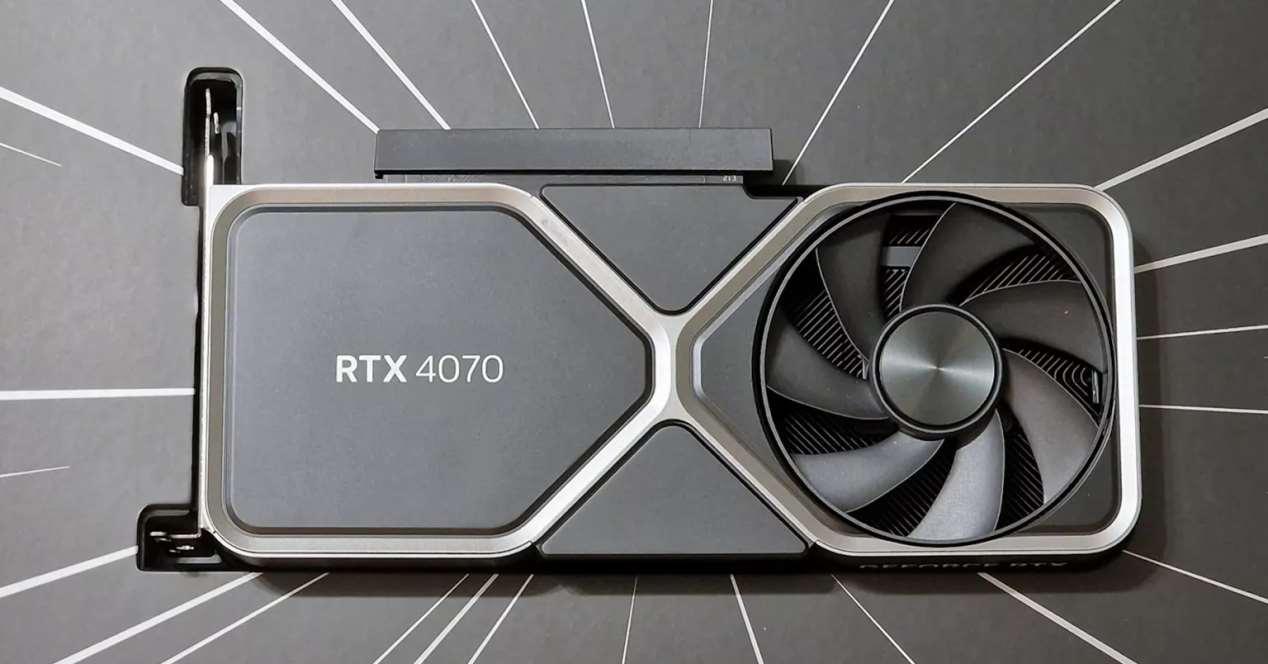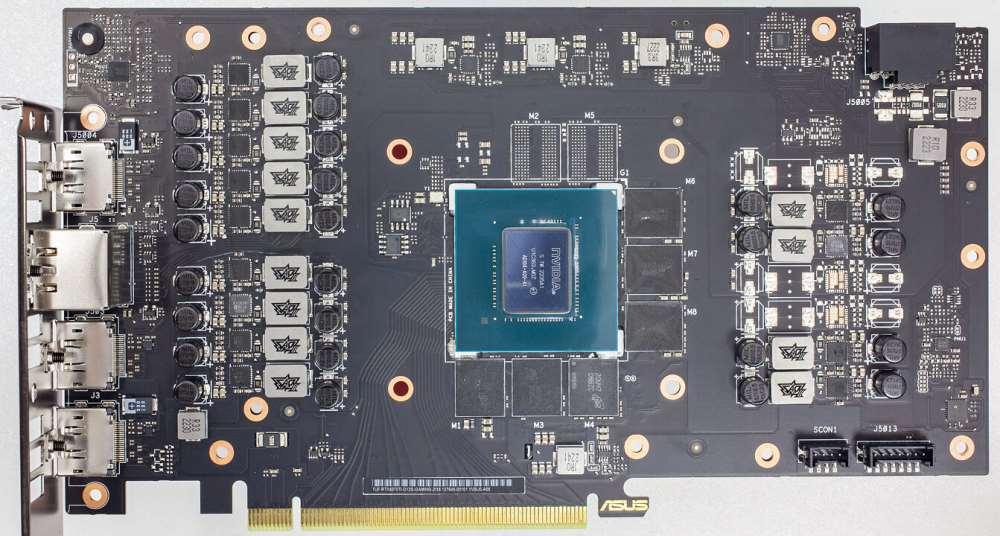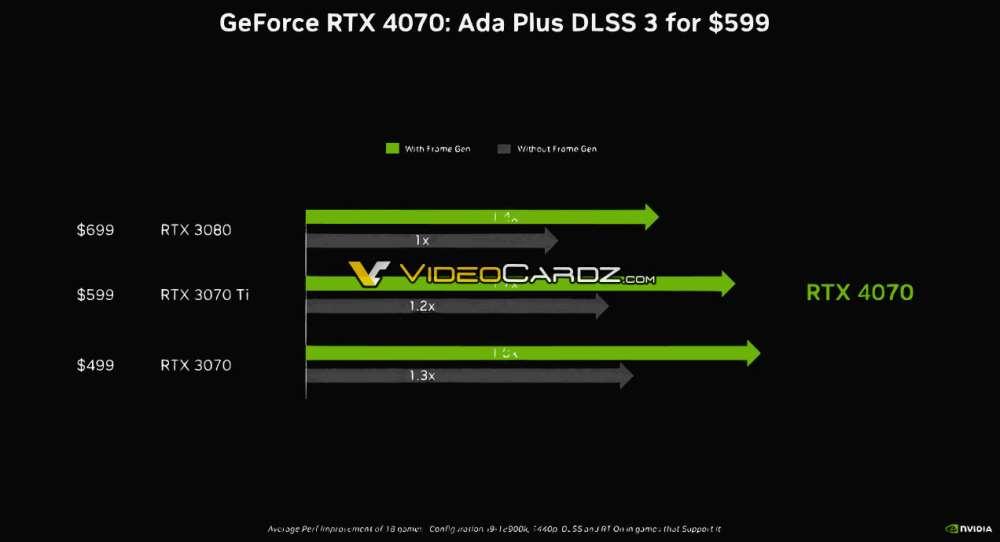
There are a couple of days left until the launch of the NVIDIA RTX 4070which will be given April 13 of this year. And, it is the moment in which we can talk about all its features and specifications in an orderly manner. As well as the relative power that it offers in games compared to other models already available on the market. Let’s see how the first RTX 40 is presented, relatively ‘cheap’.
Yes, we know that with a price around 600 euros, the RTX 4070 is not exactly cheap for most people and it will not be the most popular of the RTX 40 either. Hence, calling it “cheap” in quotes, but the The reality is that currently these graphics cards are not competing in the market against AMD’s RX 7000 for the interest of the people, but rather against the RTX 30. That is, the ones that NVIDIA launched in the previous generation, so The important thing for many users is to know how they compare in terms of power with respect to price, since budgets are limited.
Here are the specifications of the NVIDIA RTX 4070
In a way, the RTX 4 have been somewhat disappointing in the mid-range. Although at the moment they are unrivaled, the changes in terms of architecture for classic functions in terms of playing games, that is, without Ray Tracing, are minor and are rather due to the increase in clock speed thanks to to node jump. Specifically, the increase in L2 cache is for Tile Caching based rasterization from the Maxwell architecture. The counterpart? Rising costs have led them to cut bandwidth by having to make smaller chips.
However, NVIDIA has known how to hold its own and show what is expected of a generational leap, even as we go down the range, where these differences are getting shorter and shorter. That is why we have decided to make a comparative table between the RTX 4070, the RTX 3070 and finally the RTX 3080.
| RTX 4070 | RTX 3070 | RTX 3080 | |
|---|---|---|---|
| Architecture | lovelace | Ampere | Ampere |
| manufacturing node | TSMC N4 (4nm) | Samsung 8nm | Samsung 8nm |
| Chip | AD104 | GA104 | GA102 |
| base clock speed | 1920MHz | 1500MHz | 1440MHz |
| Boost Clock Speed | 2535MHz | 1725MHz | 1710MHz |
| SM (Cores) | 46 | 46 | 68 |
| RT Cores | 46 | 46 | 68 |
| CUDA drives (FP32) | 5888 | 5888 | 8704 |
| TFLOPS (FP32) | From 22.6 to 29. 83 TFLOPS | From 17.6 to 20.3 TFLOPS | From 25 to 29.77 TFLOPS |
| Tensor Cores | 184 | 184 | 272 |
| Texturing Units | 184 | 184 | 272 |
| ROPS | 64 | 96 | 96 |
| Texturing rate (max) | 466.4 GTexels/s | 317.4 GTexeles/s | 464.1 GTexeles/s |
| Fill Rate (max) | 162.3 GPixels/s | 165.6 GPixel/s | 164.2 GPixels/s |
| L2 cache | 36MB | 4MB | 5MB |
| VRAM Type | GDDR6X | GDDR6 | GDDR6X |
| Bandwidth with VRAM | 504.2 GB/s | 448GB/s | 760.3GB/s |
| Amount of VRAM | 12GB | 8GB | 10GB |
Why this comparison?
Now, many of you will wonder what it is to compare it with the RTX 3080, because it is simple. According to NVIDIA, if the base DLSS is used, without frame interpolation in games, both the RTX 4070 and the RTX 3080 both offer the same performance and if DLSS 3 is applied in full, it can give 40%. more than frames per second.
According to NVIDIA, compared to the RTX 3070, this is 30% faster, but this improvement is mainly thanks to the higher clock speed and the fact that it has faster VRAM. Of course, they have had the insight not to compare it with an RTX 3080 without its resolution scaling technology via Deep Learning.
Why should you run away from the RTX 3070?
Not only due to the fact that the RTX 4070 is faster, but due to the fact that 8 GB graphics cards will soon become the minimum specification and are already having problems with lack of video memory in many games. Not surprisingly, the fact that Samsung has invented GDDR6W memory that will allow 4 GB chips, is why the lack of video memory has become a serious problem.





